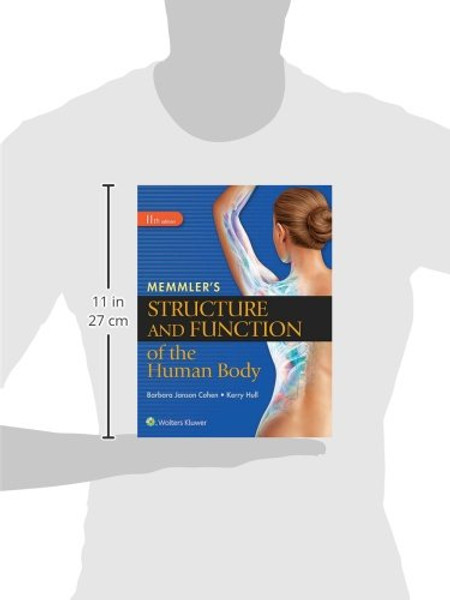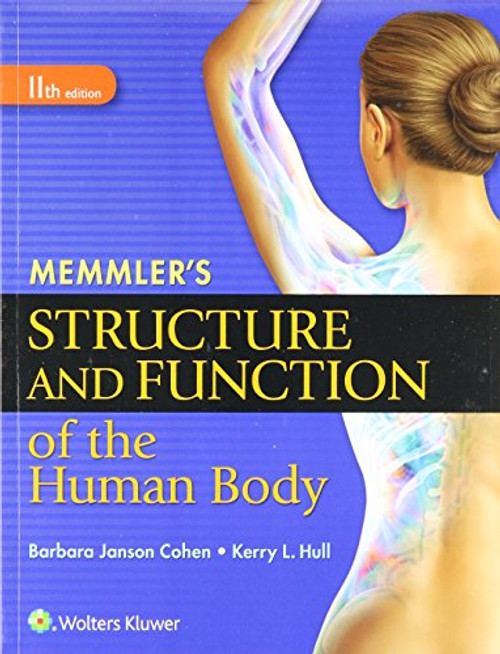Product Overview
Filled with compelling case studies that connect key content to real-world health care scenarios,Memmlers Structure and Function of the Human Body,11th Edition,provides easy-to-understand, beautifully illustrated coverage of the essentials of normal anatomy and physiology. The first text designed specifically to meet the needs of allied health students, this acclaimed resource has evolved over the years to address changing course requirements and student needs. This edition continues the tradition with a new, more accessible design, a wide range of new study tools, and a robust multimedia electronic ancillary package for both instructors and students.
Throughout the book, anatomic art illustrates concepts with accuracy and simplicity; case studies highlighting anatomy and physiology demonstrate the relevance of the content to a career in the health professions; and hallmark pedagogy blends remediation, reinforcement, and real-world focus to ensure student success.
A&P in Actionboxesopen each chapter with a scenario that integrates chapter content into a medical setting, bringing the information to life for students.
A&P in Action Revisitedboxes, which appear later in the chapter, expand on the opening scenario and encourage students to apply the chapters concepts to the outcome of each case.
A full-bodyThe Body Visibletransparency insertassists students in performing a virtual dissection of the human body from skin down to bone and allows them to test themselves on their understanding of skin, muscles, bones, veins/arteries, etc. New associated chapter questions deepen student understanding.
NewProcess Diagramsensure student mastery by calling out and illustrating the steps of a complex process, such as negative feedback control for maintaining homeostasis.
NewCadaver Photograph-related Questionshelp students apply anatomic knowledge to novel situations.
NewCasepoints(in-chapter review questions) link content to the opening case study.
NewCritical Thinking Questionsthat challenge students to apply concepts to theA&P in Actioncase study help them to understand how basic concepts of anatomy and physiology relate to clinical situations.
NewMisconception Alerts, marked by an icon, point out common student misconceptions (identified by the PrepU adaptive quizzing program) to improve understanding of important ideas.
NewOne Step at a Timefeaturesexpand on basic science concepts introduced in the case study or the text by walking students step-by-step through higher level critical thinking activities, such as developing scientific learning and problem-solving skills.
Checkpointquestionsthroughout each chapter help students review key points.
Hot Topicsboxesfocus on cutting-edge topics and research, reinforcing the link between anatomy and physiology and everyday life.
Clinical Perspectivesboxesfocus on diseases and disorders related to the chapter, helping students understand what happens when the normal structure-function relationship breaks down.
Health Maintenanceboxesoffer useful information on how to keep the body healthy.
A Closer Lookboxesprovide in-depth scientific detail on selected topics.
Zooming Inquestionsin the figure captions allow students to test their understanding of important visual aspects of the illustration.
A Look Backfeatureprovides a short paragraph highlighting content from prior chapters that will help students understand the current chapter.
Learning Objectivesidentify the important content to learn in each chapter.
A strong conceptual focusis reflected in more illustrations of basic biologic concepts and more learning diagrams that take students step-by-step through complex processes, such as sensory pathways, cardiac function, and nerve impulse transmission.
Ancillary calloutsidentify additional resources available online, such as animations, supplementary figures, a quiz bank, and health career information to enhance learning.
End-of-chapter study aidsinclude a summary overview (visual outline), key terms (end-of-chapter list), a word anatomy (medical terminology) activity, and questions for study and review that test recall, comprehension, and critical thinking with a variety of question styles, including fill-in-the-blank, multiple-choice, short-answer, and short essay, as well as questions that require students to apply body process and system knowledge to the chapter-opening case study.











